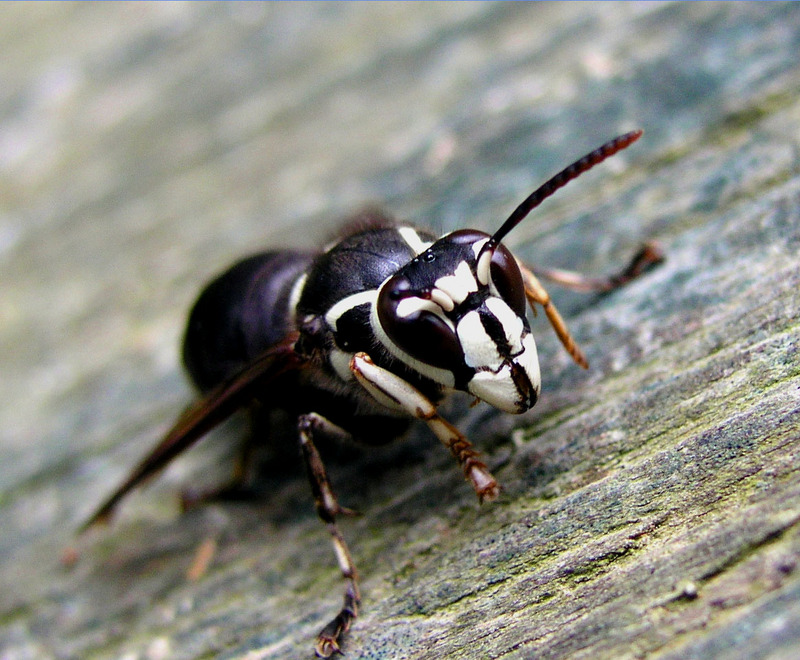|
| Query: hornet | Result: 4th of 96 | |
Bald-faced Hornet (Dolichovespula maculata) - Wiki
| Subject: | Bald-faced Hornet (Dolichovespula maculata) - Wiki
| |

| Resolution: 1164x961
File Size: 275579 Bytes
Date: 0000:00:00 00:00:00
Camera: C5050Z (OLYMPUS OPTICAL CO.,LTD)
F number: f/2.0
Exposure: 10/800 sec
Focal Length: 119/10
Upload Date: 2007:09:03 22:58:06
|
Bald-faced hornet
From Wikipedia, the free encyclopedia
[Photo] Bald-Faced Hornet by http://en.wikipedia.org/wiki/User:PiccoloNamek
Dolichovespula maculata is a North American insect which, despite commonly being called the bald-faced hornet (or white-faced hornet), is not a true hornet at all. It belongs to a genus of wasps called yellowjackets in North America, and is more distantly related to true hornets like the Asian giant hornet or European hornet, but the term "hornet" is often used colloquially to refer to any vespine with an exposed aerial nest.
The bald-faced hornet lives throughout North America, including southern Canada, the Rocky Mountains, the western coast of the United States, and most of the eastern US. They are most common in the southeastern United States. They are best known for their large football-shaped paper nest, which they build in the spring for raising their young. These nests can sometimes reach 3 feet tall. Like the median wasp Dolichovespula media in Europe, bald-faced hornets are extremely protective of their nests and will sting repeatedly if disturbed. The main area of the body that bald faced hornets attack on humans is the facial area.
Every year young queens that were born and fertilized the previous year start a new colony and raise their young. The workers expand the nest by chewing up wood that mixes with a starch in their saliva, which they spread with their mandibles and legs to dry into paper. The workers also guard the nest and collect nectar and arthropods to feed the larvae. This continues through summer and into fall. As winter approaches, the wasps die, except for young fertilized queens which hibernate underground or in hollow trees. The nest is generally abandoned by winter, and will most likely not be reused. When spring arrives the young queens emerge, and the cycle begins again.
Bald-faced hornets visit flowers, especially in late summer, and can be minor pollinators.
Like other social wasps, bald-faced hornets have a caste system made up of the following:
Queens ??? fertile females which begin the colonies and lay eggs
Workers ??? infertile females which do the manual labor
Drones ??? males, which have no stingers, and are born from unfertilized eggs.
http://en.wikipedia.org/wiki/Bald-faced_hornet
| The text in this page is based on the copyrighted Wikipedia article shown in above URL. It is used under the GNU Free Documentation License. You may redistribute it, verbatim or modified, providing that you comply with the terms of the GFDL. |
|
^o^
Animal Pictures Archive for smart phones
^o^
|
|

